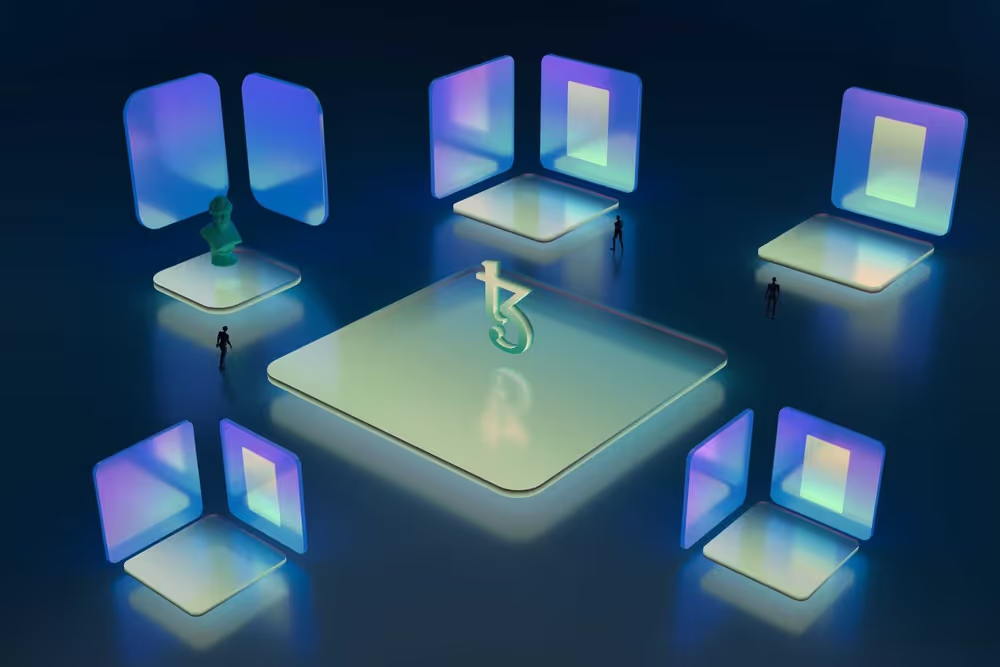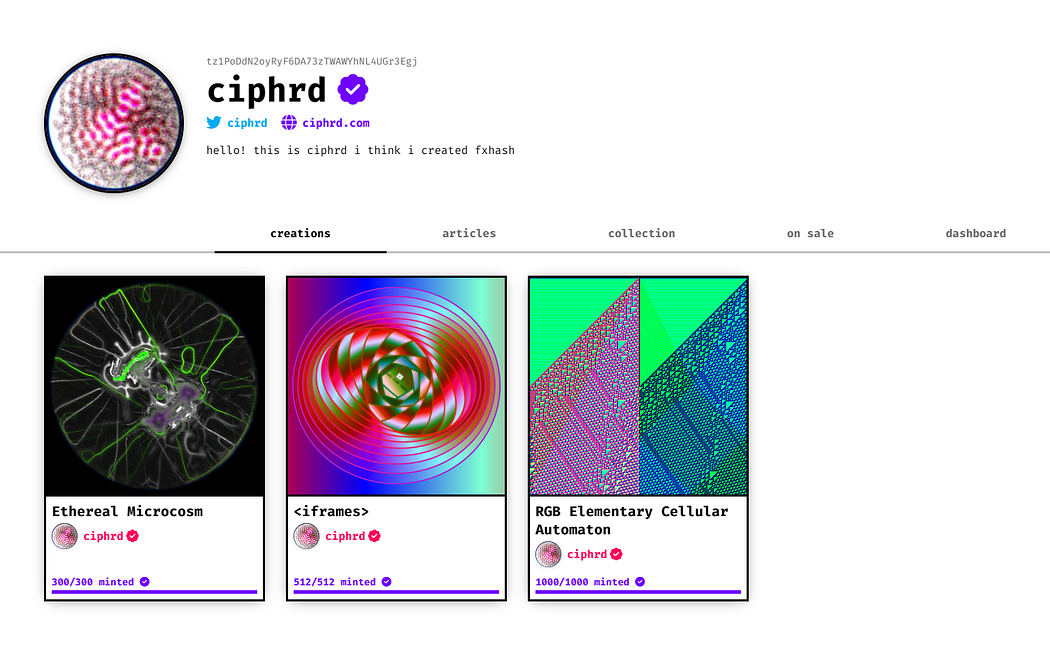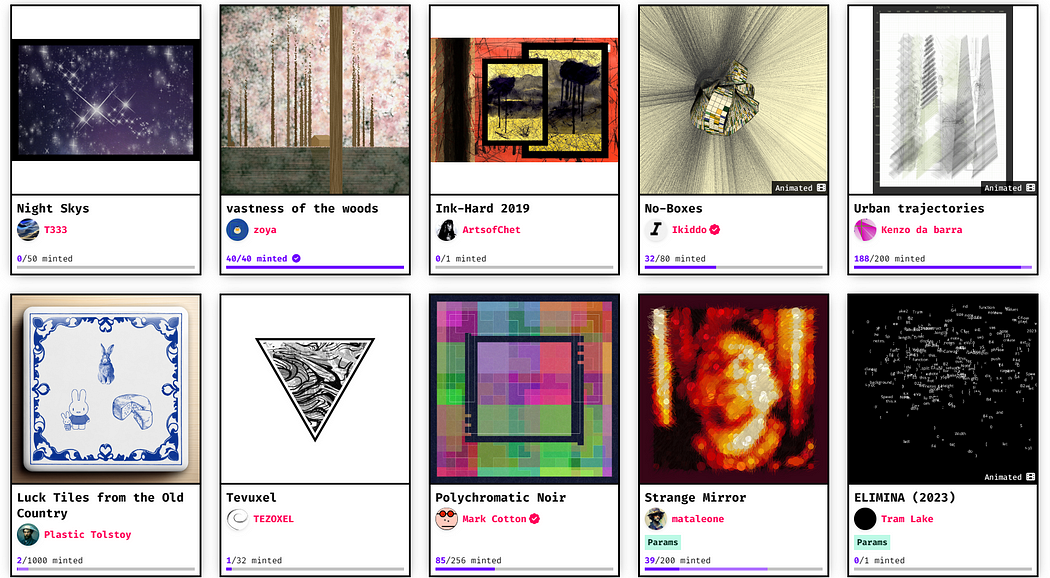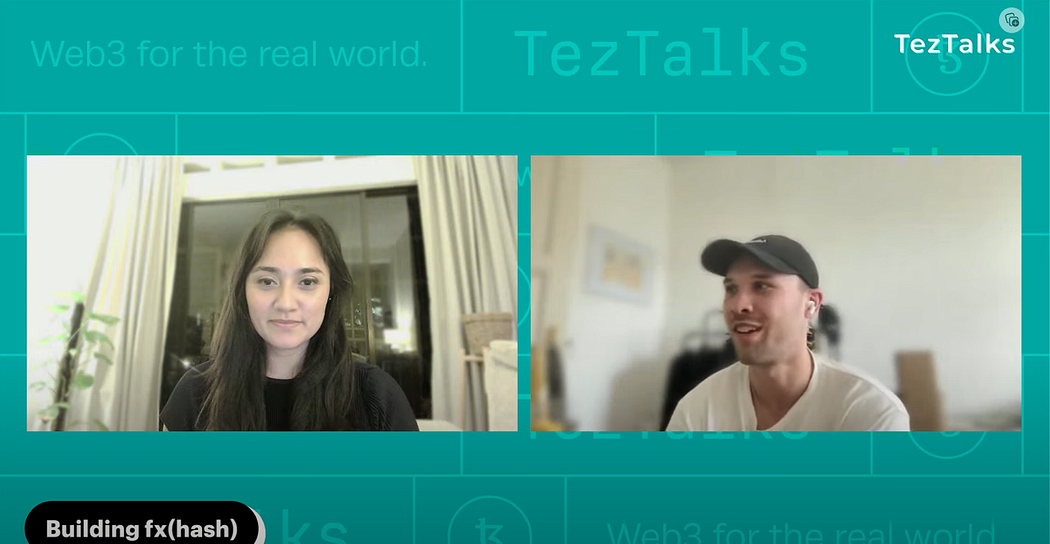Generating the Future: Exploring Tezos Generative Art Marketplace fx(hash) with Paul Schmidt
Tezos-powered generative art marketplace fx(hash) has made some big waves in the global art scene since its inception back in 2021.
8 minute read

Tezos-powered generative art marketplace fx(hash) has made some big waves in the global art scene since its inception back in 2021. As the largest generative art marketplace in the Tezos ecosystem (not to mention one of the biggest in the blockchain space as a whole), fx(hash) has played a key role in bringing the term “generative art” into our common lexicon and this powerful emerging art form to the forefront of the global art conversation.
The impetus for the creation of fx(hash) was a relatively simple one. To hear fx(hash) COO Paul Schmidt tell it, the creation of this groundbreaking platform essentially boils down to a single generative artist experiencing a pressing need in his own career and deciding to fill it for himself…
fx(hash) founder ciphrd is an amazing generative artist himself. He’s been a developer in that sense since he was like 10 years old. He always did small scale installations near where he’s from in France, but he didn’t really have a tool to showcase his work and distribute it. Back then everything was — and in fact nearly everything still is — curated. He essentially just built a platform for himself in this open spirit and then really just released it. I don’t think he thought it would gain traction. He built it because he needed and wanted a tool for artists to release generative art. That’s still our mission, and it’s why we’re so artist-focused and why our products and tools are mostly catered around artists, not catered around the marketplace.

As it turned out, this “artist-focused” approach resonated with many in the generative art realm, and ciphrd’s prediction that fx(hash) might struggle to gain traction proved to be incorrect. The timing of fx(hash)'s release into the wild couldn’t have been any better. A perfect storm of pent up demand from artists and collectors coupled with a booming artistic community experiencing a major shift in the Tezos NFT arena soon pushed fx(hash) into a position of prominence in the global NFT space…
We’ve only actually existed in the bear market. We were too late to get anything from the early positive market around NFTs. I think it was a combination of things: for artists, there was a big pain point of not being able to release their work, especially not long-form generative work. collectors had the big pain point of not being able to afford work and having very limited choices as a result. This was also when Hic et Nunc died, so there was a lot of missing activity — there was a platform missing. We had product-market fit within the first day. There were also these network effects within Discord, within Twitter, with artists talking to each other. All of these artists had been just sitting on their projects, and it was like ‘OK, this is now finally a chance for me to release it’. If there’s great art, the collectors will follow. It was just a flywheel effect, as I recall it. That helped us a lot.
The buzz around generative art has sustained itself through the duration of the post-hype global NFT downturn. Advancements in AI technology and the ongoing evolution of blockchain itself, the technology behind it, and its many applications have empowered artists experimenting with this powerful new medium to push its boundaries and explore the enticing possibilities it presents.

The widespread appeal of generative art and the buzz it has managed to generate at this early stage of its evolution can’t be attributed to any one thing. Generative art is by no means a new concept. It’s been waiting patiently in the wings for decades for its time to shine. With blockchain-powered NFTs changing the parameters of how art is marketed, sold, and collected in the digital age, it appears that that time to shine has come…
***We consume more and more digital stuff online. Generative art has been around since the 60s, basically since computers were first created, but artists couldn’t really financialize their artwork and people couldn’t really collect it. Blockchain shone a bigger and better spotlight on it, and I think there was a lot of pent-up collector demand for it.
It’s new and exciting, especially for the younger generation that doesn’t have the money to collect art but has grown up in a digital world, might be able to know and understand code, and can also create code and create artworks on their own. It’s opened up a lot of new groups to be able to appreciate art. I think that’s what’s driving — and what will continue driving — generative art.
We internally, and I personally, think that generative art is, or can be, the art movement of our era.***
The assertion that generative art could be “the art movement of our era” is a reasonable one, considering the moment in time we currently occupy. Digital technologies are driving massive changes in our lives and our relationships with others. AI is becoming a ubiquitous presence at a rapid pace, and many of the dominant paradigms of global activity are being challenged in ways that weren’t even on our collective radars just a few short years ago. The stage is set for continued changes in many aspects of global commerce as it exists today. Nowhere is this emerging new reality more apparent at this moment in time as it is in the art world, especially on Tezos, as Paul spoke about during his recent appearance on TezTalks Radio…

***It has the potential to democratize a lot of things. A lot of things in the art world, and in general, are curated top-down, so a few people — decision-makers, curators, museums, galleries, institutions — think X is good. If X is good, then it should be bought. But, even if I wanted to buy from that specific artist, and even if I had the money, at times I still might not have the opportunity to.
I think with this sort of bottom-up way of doing it — of letting the artist upload their own work, giving them the power with the collector, giving the collector to support any artist they want, it can be really good.***
Marketplaces like fx(hash) exist, in large part, to facilitate this “bottom-up” process Paul Schmidt describes. They are currently among the thought leaders of the larger NFT, digital, and generative art market and represent a crucial entry point for those looking for ways to get involved. And, while some may be leveraging this role for their own financial gain or to increase their own level of control within the space, the team at fx(hash) have taken a much wider view. They’ve made it their mission to empower those participating in this fledgling system to determine its future. In their view, the relationship between all stakeholders within this system should (and must) be a two-way conversation…
***We always try to listen as much as possible to the community. That’s a benefit that a lot of Web 2.0 companies don’t have. We have direct access to most of our artists and most of our collectors. That feedback is really valuable, and we try to do our best to incorporate it into what we do.
Right now, fx(hash) is still a mix of what we — and especially ciphrd- had in mind when creating it, and now we’re getting to a stage where we can finally unleash it, and unleash him and his ideas and visions for the broader space of generative art. I’m really excited, because we (and he) have a lot of ideas about how to make the whole experience better and nicer for Web 3.0-native people and for the people who are just here for the art and don’t necessarily care about crypto as much.***
With its artist-first, democratic approach to building out the generative art marketplace of the future, fx(hash) is paving the way for an entire generation of artists to realize their own creative visions right here in the Tezos ecosystem. And, if the stunning growth of this early-stage Tezos NFT generative art marketplace is any indication of potential growth of generative art on Tezos, then the future of Tezos might be even brighter than the most optimistic among us can even imagine.
Written by Stu Elmes, Tezos Commons